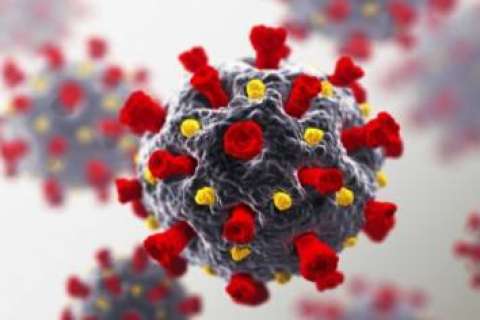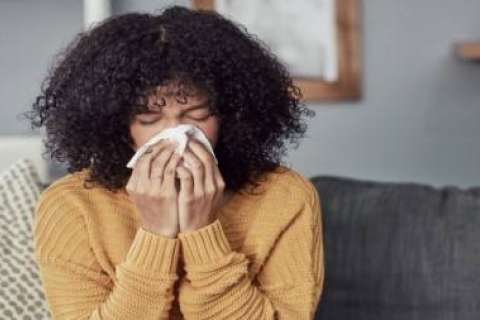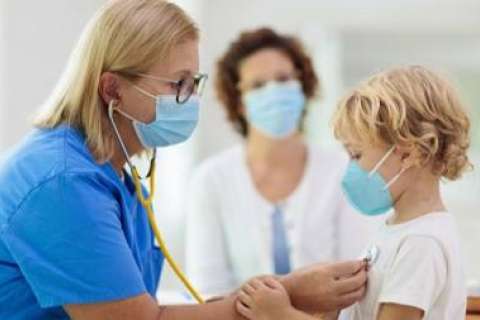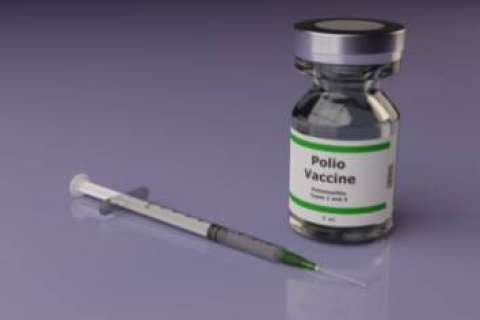Here’s a look at where things stand with this year in viruses.
COVID-19
New omicron variants are circulating and infection rates are increasing slightly in California, but experts predict COVID-19 won’t cause the surge in cases and deaths it did over the two previous winters.
“The general population pretty much has been exposed, either through vaccination or infection,” says Shangxin Yang, PhD, a clinical microbiologist with UCLA Health. “But for the immunocompromised population, COVID will continue to be another pathogen that can make them very sick or die.”
One big change with COVID-19 over previous winters is the number of treatments now available, Dr. Yang says. These include two “very effective” drugs and various monoclonal antibody treatments.

“There are plenty of treatment options that exceed the options for other viral infections, such as flu,” he says. “For flu, literally, we don’t have as many choices compared to COVID at this point.”
The new “bivalent” COVID-19 booster shot, designed to better match the omicron variant, is as effective as the original vaccines, Dr. Yang says. It’s still unclear whether it’s more protective than the original shots, he says.
Flu
Flu may cause more problems than COVID-19 this year, Dr. Yang says.
The past two flu seasons have been milder than normal, as mask-wearing and social distancing prevented the spread of flu and other viruses.
The “very cruel reality” is that population immunity to the flu has been lessened by these effective practices, Dr. Yang says.

“That’s the reason why, once these viruses come back, they can spread much more widely, because more people are susceptible,” he says.
Researchers look to the Southern Hemisphere to identify potential influenza severity and circulating strains, since the flu season Down Under comes months before ours. This year Australia “had one of their worst flu seasons in the past five years,” says Annabelle de St. Maurice, MD, MPH, co-chief infection prevention officer for UCLA Health.
She and other health care professionals strongly recommend flu shots for everyone age 6 months and older.
While vaccination against influenza does not prevent all flu infections, it reduces the likelihood of the need for doctor visits related to the virus by 40% to 60%, according to the CDC. Vaccination significantly reduces hospitalization for flu for all age groups. And the flu vaccine can be life-saving for children – a 2022 study found it reduced the risk of life-threatening influenza by 75%.
Even young and healthy individuals can get severely ill or die from flu, Dr. de St. Maurice says.
Young people who were not vaccinated against flu have already died from the virus this year, Dr. Yang adds.
“Because COVID was so prevalent these past three years, it really kind of out-competed flu,” he says. “But this year, as flu comes back, I think it’s going to delay the COVID surge until January,” as people sick with flu stay home to recover, thus avoiding catching or spreading COVID-19.
RSV
Masking, social distancing and virtual schooling to prevent the spread of COVID-19 has also contributed to unseasonably high levels of respiratory syncytial virus, or RSV, experts say.
“We know RSV is coming every year, but the degree to which it’s happening and the rapid increase in cases this early on is unusual,” says Dr. de St. Maurice.

RSV is a seasonal virus that causes upper-respiratory symptoms in older children and adults. But the virus can cause serious illness in younger children and infants, including bronchiolitis — inflammation of the small airways in the lungs — that can be severe enough to require hospitalization.
According to the U.S. Centers for Disease Control and Prevention, “virtually all children” get an RSV infection by the time they turn 2.
But because COVID-19 kept children away from playdates and preschool for more than two years, “we have a lot of children who haven’t been exposed and are vulnerable to getting sick,” Dr. de St. Maurice says.
At least one child younger than 5 has died from flu and RSV in California this season, according to the Department of Public Health.
There is no vaccine for RSV, though studies are underway.
Most cases of RSV are mild and resolve on their own in about two weeks. Young children who are at high risk of serious illness from RSV — including babies born premature and infants with chronic lung disease or congenital heart disease — may be eligible to receive a monoclonal antibody called palivizumab.
Polio
Forty-three years after being eliminated in the United States, polio is back.
The CDC announced in September that vaccine-derived poliovirus is circulating in the country after a case of paralytic polio was identified in New York.
There are two vaccines against polio: the inactivated polio vaccine injection and the oral polio vaccine. The injectable vaccine, which has been the only form offered in the U.S. since 2000, contains inactive virus that stimulates an immune response in the body.
The oral vaccine contains attenuated virus — a weakened version that prompts the body’s immune response.

“Since the oral polio vaccine is a live virus, there is a very small chance that the virus can spread from person to person” in populations where local immunity is low, says Dan Uslan, MD, co-chief infection prevention officer for UCLA Health. “And occasionally it can mutate into a form of polio that can actually cause the dreaded complications, including paralysis.”
The oral vaccine is still in use in many parts of the world because it is much more convenient to use in remote areas, such as Afghanistan and Pakistan, where wild polio virus is still circulating.
The anti-vaccine movement that became highly politicized with regard to COVID-19 has contributed to general vaccine hesitancy, which may have led to fewer people in the U.S. getting the polio vaccine, says Dr. Yang.
Most Americans born after 1955 were vaccinated against polio as children and protection against the virus lasts many decades. But if enough people decline vaccination, population immunity drops and allows viruses to spread.
“Once you see one paralytic case, there are probably already 100 people infected,” Dr. Yang says. “People who are vaccinated are totally protected. But those who aren’t are at very high risk.”
Most people infected with poliovirus are asymptomatic, Dr. Uslan says. A small percentage of infected individuals will show responses such as flu-like symptoms and mild fever. An even smaller number experience the most severe symptom of polio — paralysis — which can lead to permanent disability and death.
Monkeypox (Mpox)
The international outbreak of this rare disease from the family of viruses that causes smallpox was confounding and unexpected, says Dr. Yang.
Experts thought monkeypox, which the World Health Organization has renamed mpox, “shouldn’t be so contagious and should be pretty limited to certain regions,” he says. The disease has typically been found in the rainforests of central and western Africa.
Mpox emerged in California in May and the first case in Los Angeles was identified in June. Since the start of the outbreak, there have been nearly 2,400 mpox cases in Los Angeles County, according to public health data.
The virus appears to have initially spread to the U.S., Australia and several countries in Europe from a large public gathering, Dr. Yang says. Human-to-human transmission occurs through direct contact with skin lesions or bodily fluids or through respiratory secretions and saliva. Mpox is far less transmissible than COVID-19 or other respiratory illnesses.
Symptoms of mpox typically begin with fever, swelling of the lymph nodes, body aches and fatigue and ultimately include a characteristic rash which may begin on the face and spread to other parts of the body.
Mpox lesions may progress through stages from flat to raised to fluid-filled and may be itchy or painful. The lesions eventually scab over and fall off. The illness typically lasts two to four weeks.
Vaccination with a smallpox vaccine and treatment with an antiviral medication appears to have significantly curtailed the spread of mpox.
Ebola
Since Uganda declared an outbreak of Ebola on Sept. 20, there have been at least 136 cases and 53 confirmed deaths from the virus, according to the World Health Organization.
“This is one of the largest Sudan Ebola strain outbreaks,” says Dr. de St. Maurice.
Cases have been limited to Uganda so far.
U.S. officials are screening passengers at airports in Chicago, Atlanta, Newark, New York and Washington, D.C., who have visited Uganda in the past 21 days, according to the CDC.
Learn more about the flu and schedule a flu shot.





